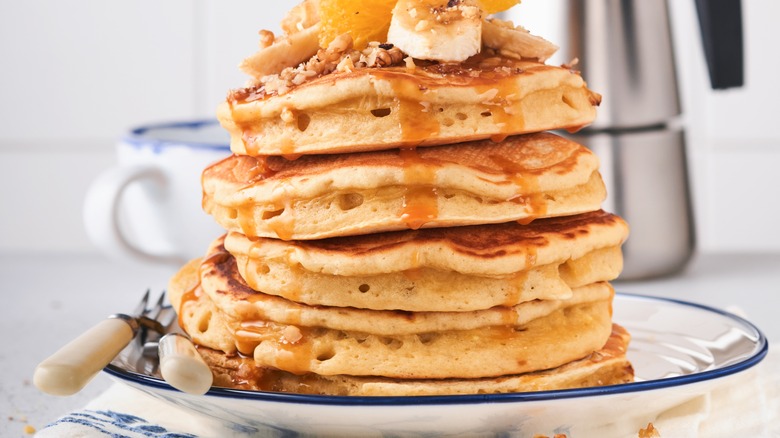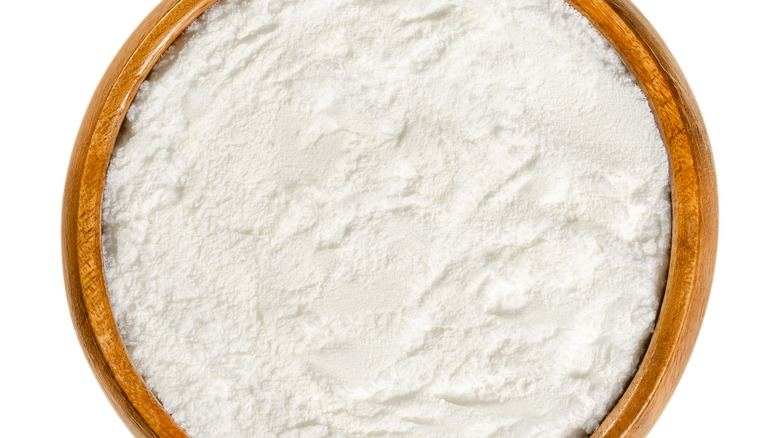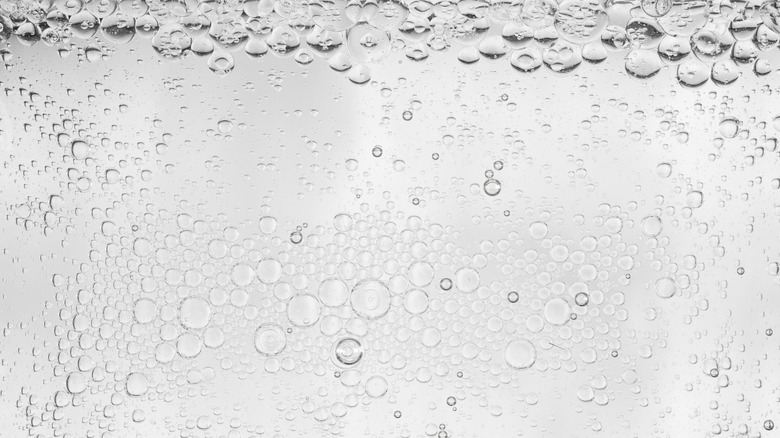Seltzer Can Take Your Pancakes To Another Level Of Fluffiness
Pancakes possess a unique culinary fascination. Not only does almost every civilization have its own version of them (French crepes, Ethiopian injera, Greek tiganite, Ugandan kabalagala, and German Pfannkuchen just to name a few), but they also inspire a unique level of competition. Maybe it's because they are such a simple template. Any grain can be ground into flour, mixed into a batter, and turned into something that's technically a pancake after all.
Or maybe it has something to do with how they're cooked? The simplicity of a circular dough cake begs the question, "how big can we make a pancake?" According to the Guinness Book of World Records, the largest pancake is currently just over 49 feet. Maybe it has more to do with the cooking method. The flashy method of flipping a pancake without a spatula seems to have partially inspired the many feats of Dominic "Mike" Cuzzacrea who has multiple pancake-flipping records including the fastest time for running a marathon while flipping a pancake.
While not everyone is going to attempt similar feats of pancake greatness at home, one competition that still rages in home kitchens across the country is to make the fluffiest pancakes imaginable. If you've ever struggled to get a proper lift out of your pancakes, then there's a common ingredient that can help.
What makes pancakes fluffy?
If you look at almost any classic pancake recipe you'll notice one recurring ingredient — baking powder. That's because baking powder is the difference maker for crafting light fluffy pancakes instead of uber-flat frisbee cakes.
Baking powder is usually made up of two substances, baking soda and some kind of powdered acid. When these compounds are combined with water, a chemical reaction occurs that creates carbon dioxide gas. These gasses are then trapped in the batter's gluten structure and essentially turn your pancake into a network of tiny balloons. This gives them lift as more gasses are released during the cooking process and creates fluffy, light pancakes (unless you can't help pressing them down with a spatula).
Another method for creating this is to trap gasses inside of an egg's protein structure. This is the same technique that creates pillow-like Japanese souffle pancakes. Either way, the key to fluffy pancakes is trapping gas inside the pancake's bubbles.
Adding seltzer to your batter
With an understanding of where pancakes get their fluff from, it's easy to find ways to hack this process. One of the easiest ways to do this is to swap seltzer water in place of another liquid in your pancake recipe.
Seltzer water is simply water that has been infused with carbon dioxide gasses that give it lots of bubbles and fizz. We add baking powder to pancakes to create these very same gasses and so it makes perfect sense that adding some store-bought CO2 to the recipe would add an extra bit of lift.
Seltzer can also be used in all sorts of other recipes as well. Tempura batter uses seltzer water to create a light and airy crust on fried foods, it can add lift to scrambled eggs, or make your morning smoothie lighter and less dense.
Simply swap the water or part of the milk in your favorite pancake recipe with some unflavored seltzer water, and mix as usual. The bubbles will do all the work, and the baking powder will continue to add its own lift as well.


